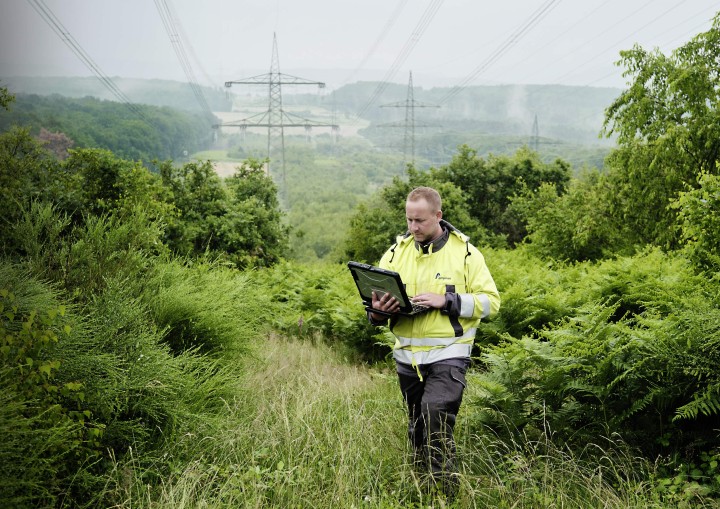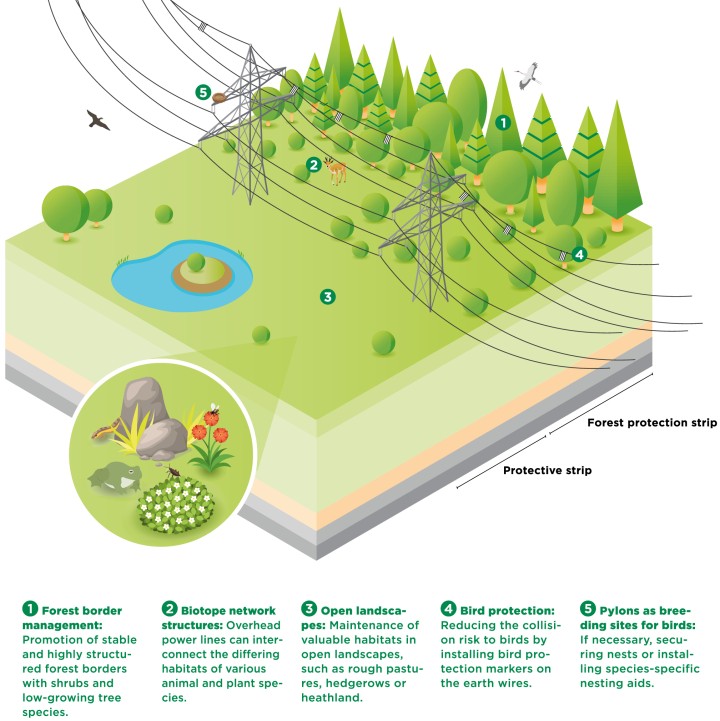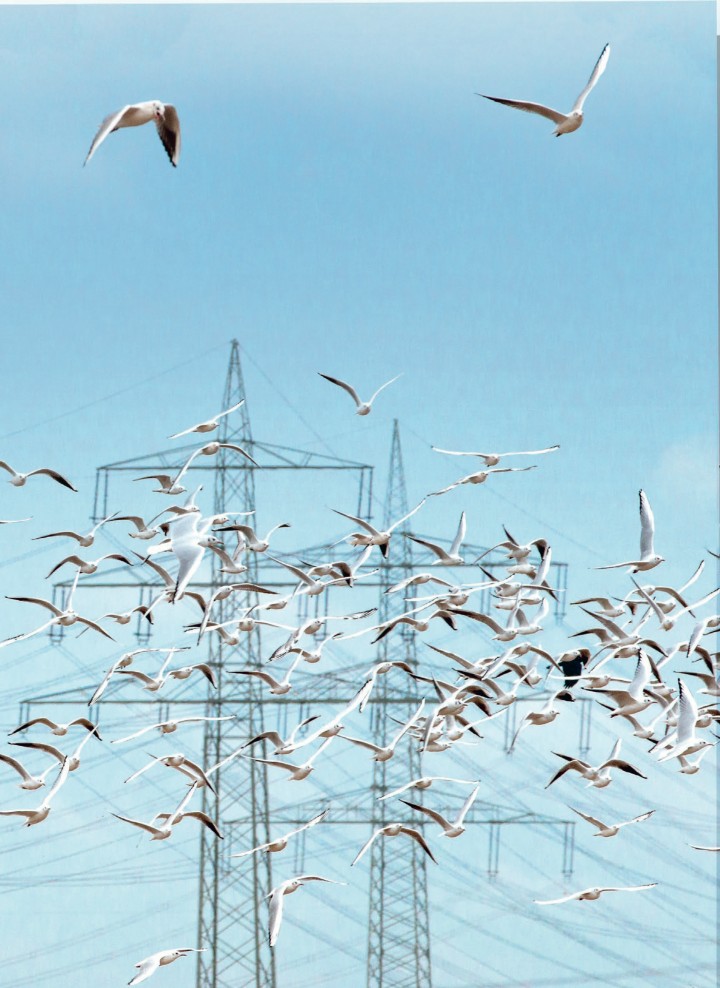Field of Action: Environment

We are striving for climate neutrality for our own operations, making wise use of resources and actively conserving nature and protecting species by making them integral parts of our projects. We are working to promote:
- Nature conservation
- Species protection
- Resource conservation and climate protection
Nature conservation
Grid expansion is indispensable if the energy transition is to succeed. This is the only way we can achieve the climate targets set by Germany and the EU. In the process, the power lines cross landscapes, forests and meadows, coastal and inland waters – and impact the various ecosystems. Amprion sees protecting these ecosystems as an important part of its remit.
For more than 20 years, Amprion has been playing a pioneering role in the area of sustainable route maintenance. This is founded on a holistic approach: we take environmental aspects into account not only when planning but also subsequently when constructing and operating our power lines and other installations. At the core of our corporate commitment is our Integrated Vegetation Management, which has grown over the years and which we are constantly developing in-house and in consultation with key stakeholders. Numerous habitats have been created along the grid in which protected species, amongst others, have settled.
Amprion relies on innovative power transmission technologies and takes their environmental compatibility into account. This also applies to underground cabling, which – while preserving the landscape – in some cases requires extensive earth-moving measures.
Offshore lines need to be built in order to connect offshore wind farms to the onshore transmission grid. Over and above the legal requirements set down at EU, federal and state level, we are taking measures to protect the habitats there. In the Wadden Sea National Park, for example, we follow the “zero discharge principle”. That is, we leave nothing behind that does not naturally occur there. As part of our marine conservation efforts, we show consideration for marine wildlife. When installing converter platforms out at sea, we intend to take special noise control measures to protect the very acute hearing of marine animals such as the common or harbour porpoise.

Species protection
Amprion’s Integrated Vegetation Management programme enables new habitats to be created on its power line routes. These are connected with one another along our extensive transmission grid. The resulting network of biotopes prevents “islanding” of species and fosters their development. For us, species protection also means protecting animals while our overhead lines are in operation.

Since the protection of birds is a major concern for us, we got together with experts to initiate our own bird protection programme. This gave rise to measures that are now an integral part of our overhead line management. Thanks to the bird protection markers attached to the earth wires above conductor cables, we can, for example, reduce the collision risk for many species locally by up to 90 per cent. We also equip suitable route sections with nesting aids.
To ensure effective bird protection, we cooperate with environmental associations as important, expert partners. Together with other grid operators, for example, we support the “ Bird hotline” portal operated by the German partner organisation of BirdLife (Naturschutzbund Deutschland e.V., or NABU for short) on behalf of the Renewables Grid Initiative. Grid operators and NABU are now, for the first time, jointly evaluating data. In 2022, the project was extended for another three years until 2025.
Resource conservation and climate protection
In Amprion’s core business, expanding the grid infrastructure uses the most resources. Here, we focus from the word go on using these resources efficiently and make a point of deliberately choosing durable materials to build our power lines.
When we use resources, we make sure that we handle all reusable and recyclable materials with care. Where possible, we avoid waste or promote its recycling. All unavoidable waste is collected separately and disposed of in compliance with legal requirements. We employ a waste balance sheet to record all waste-related data such as the type, quantity and whereabouts of wastes, which we regularly evaluate. In this way, we create full transparency vis-à-vis the authorities.
To enable us to utilise energy as efficiently as possible, we operate an energy management system that is certified in accordance with ISO 50001. Amongst other things, our joint “Environment and Energy” guideline commits us to continuously improving our energy efficiency. We keep an eye on data centres, vehicles and heating systems, ventilation systems, HV equipment and buildings for this purpose, for instance. In principle, all new buildings at Amprion provide the highest level of energy efficiency. Whenever Amprion constructs new buildings, we always include PV systems in our plans. And we tap the potential offered by the roofs of existing buildings, too. Further savings can be achieved by utilising waste heat to heat buildings.
Climate protection is part of Amprion’s social responsibility. We face up to this responsibility in our own operations and along our value chain. Our climate strategy includes concrete and measurable reduction targets. In order to monitor these targets and identify further potential savings, Amprion measures its greenhouse gas emissions at regular intervals. In addition to carbon dioxide (CO2), we also take account of other greenhouse gases such as SF6 and convert them into CO2 equivalents.